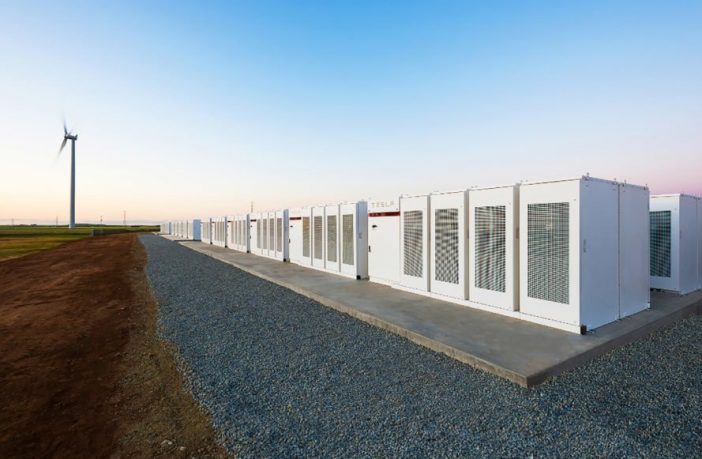- The big battery optimises system security and reduces the risk of blackouts and load shedding.
- Through its fast frequency response, the battery has also provided a premium Contingency Frequency Control Ancillary Service (FCAS), thereby avoiding or reducing load shedding.
- The added security has resulted in a savings of A$40 Million.
- Other emerging opportunities have been identified for batteries to provide a wide range of services to support a secure network and reliable generation.
The Hornsdale Power Reserve (HPR) supplied by Tesla, is the world’s largest lithium-ion battery energy storage system, with a discharge capacity of 100 MW and energy storage capacity of 129 MWh. Located near Jamestown, South Australia, it shares the same 275 kV network connection point as the 300 MW Hornsdale windfarm.
The project reserves 70 MW of its discharge capacity for designated system security services contracted with the South Australian (SA) Government. The remaining 30 MW power capacity and 119 MWh energy storage is available to Neoen for market participation.
A new report by Aurecon which has analysed the HPR’s performance in the first year of operation shows the Hornsdale Power Reserve has delivered and then some. The report highlights the effectiveness of the big battery to optimise system security and reduce the risk of blackouts and load shedding.
Through its fast frequency response, the big battery has also provided a premium Contingency Frequency Control Ancillary Service (FCAS), thereby avoiding or reducing load shedding in the state. As a result there has been massive savings.
The introduction of HPR has also significantly increased competition in the Regulation FCAS market. This has effectively reduced the pricing impact of the South Australian 35 MW FCAS constraint, which is estimated to have added nearly AUD 40 million in regulation FCAS costs in both 2016 and 2017.
The Aurecon report also identifies opportunities that have emerge for batteries to provide a wide range of services to support a secure network and reliable generation. Emerging opportunities include:
- Increasing share in existing ancillary services markets, and future market mechanisms anticipated to emerge to appropriately value battery services, such as FFR.
- Enabling Volume Firming Agreements to complement Power Purchase Agreements.
- Non-network solutions to transmission and distribution network constraints – particularly with increasing solar PV and electric vehicle deployment.
- Enabling firm / dispatchable generation from variable renewables to manage reliability obligations and characteristic changes to net operational demand.
Author: Bryan Groenendaal















